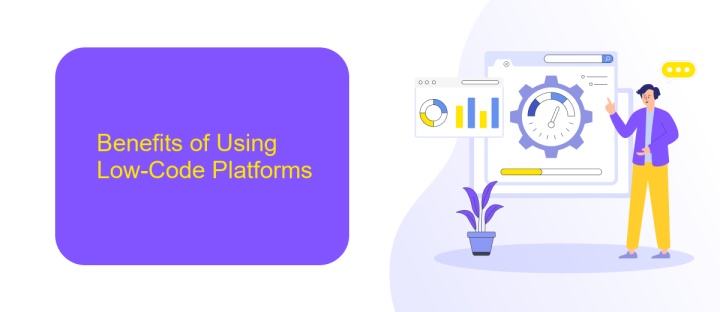Low-Code App
In today's fast-paced digital landscape, low-code application development is revolutionizing how businesses approach software creation. By enabling users to design applications with minimal hand-coding, low-code platforms empower both professional developers and non-technical users to rapidly prototype, iterate, and deploy solutions. This democratization of app development not only accelerates time-to-market but also fosters innovation by making technology accessible to a broader audience.
Introduction to Low-Code App Development
Low-code app development is revolutionizing the way businesses approach software creation by simplifying the process and reducing the need for extensive coding expertise. This approach allows developers and non-developers alike to build applications through graphical user interfaces and configuration instead of traditional hand-coded programming. As a result, organizations can accelerate their digital transformation efforts, reduce development costs, and improve agility in responding to market demands.
- Speeds up the development process by minimizing manual coding.
- Enables collaboration between technical and non-technical team members.
- Facilitates rapid prototyping and iterative development.
- Reduces reliance on specialized programming skills.
With the growing demand for digital solutions, low-code platforms are becoming an essential tool for businesses of all sizes. They empower companies to innovate quickly and efficiently, allowing them to stay competitive in a fast-paced market. By democratizing app development, low-code platforms enable more people within an organization to contribute to software development, fostering a culture of innovation and continuous improvement. As this technology continues to evolve, it promises to further transform the landscape of software development, making it more accessible and inclusive.
Benefits of Using Low-Code Platforms

Low-code platforms offer a transformative approach to application development by significantly reducing the time and resources required. These platforms enable users with minimal coding skills to create robust applications through intuitive drag-and-drop interfaces. This democratization of app development empowers businesses to quickly respond to market demands and innovate without the need for extensive IT involvement. As a result, companies can improve their operational efficiency and agility, leading to faster time-to-market and enhanced competitiveness.
Another significant benefit of low-code platforms is their ability to seamlessly integrate with existing systems and services. Tools like ApiX-Drive facilitate these integrations by providing a straightforward way to connect various applications and automate workflows. This capability not only enhances the functionality of the developed apps but also ensures that they work harmoniously within the broader technological ecosystem of the organization. By leveraging such integration services, businesses can streamline processes, reduce errors, and ultimately drive better outcomes with less effort.
Key Features and Functionality of Low-Code Apps

Low-code applications have revolutionized the way businesses approach software development by significantly reducing the need for extensive coding. These platforms empower users with varying technical skills to create applications through graphical interfaces and pre-built modules. This approach accelerates development, reduces costs, and enhances collaboration between IT and business teams.
- Drag-and-Drop Interface: Simplifies the design process by allowing users to visually arrange components.
- Pre-built Templates: Offers a variety of templates to quickly start app development without building from scratch.
- Integration Capabilities: Easily connects with existing systems and third-party services through APIs.
- Automated Workflows: Streamlines business processes by automating repetitive tasks.
- Scalability: Ensures applications can grow and adapt with the business needs.
By leveraging these key features, low-code platforms democratize app development, enabling faster deployment and iteration. This empowers businesses to respond swiftly to market changes and innovate continuously, ensuring they remain competitive in a rapidly evolving digital landscape.
Use Cases and Examples of Successful Low-Code Implementations

Low-code platforms are revolutionizing the way businesses develop applications by enabling rapid, efficient, and cost-effective solutions. These platforms are particularly beneficial for organizations seeking to streamline processes, enhance customer experiences, or quickly adapt to market changes. By reducing the need for extensive coding knowledge, low-code tools empower a broader range of employees to contribute to app development, fostering innovation and collaboration.
In various industries, low-code implementations have led to significant improvements in operational efficiency and customer satisfaction. Companies are leveraging these platforms to automate routine tasks, integrate disparate systems, and create user-friendly interfaces that enhance engagement. The versatility of low-code solutions makes them suitable for diverse applications, from internal process automation to customer-facing services.
- A healthcare provider developed a patient management system, reducing appointment scheduling time by 40%.
- A retail company launched a mobile app for personalized shopping experiences, boosting sales by 30%.
- A financial institution automated compliance reporting, cutting down processing time by 50%.
These examples highlight the transformative potential of low-code platforms across different sectors. By enabling rapid development and deployment, businesses can stay ahead of the competition and respond swiftly to evolving customer needs. As more companies adopt low-code solutions, the landscape of application development continues to evolve, offering new opportunities for growth and innovation.
Choosing the Right Low-Code Platform for Your Needs
When selecting a low-code platform, it's essential to assess your specific business needs and technical requirements. Start by identifying the core functionalities that your application requires and ensure that the platform can support these features. Consider the scalability of the platform, as your business may grow and require more robust solutions in the future. Additionally, evaluate the platform's user interface and ease of use, as this will impact the efficiency with which your team can develop applications.
Integration capabilities are another crucial factor to consider. Choose a platform that offers seamless integration with your existing systems and third-party services. For example, ApiX-Drive can be an excellent tool for setting up integrations quickly and efficiently, allowing your applications to connect with various services without the need for complex coding. Finally, consider the platform's support and community resources, as these can provide valuable assistance and guidance throughout your development journey. By thoroughly evaluating these aspects, you can select a low-code platform that aligns perfectly with your business objectives.
FAQ
What is a Low-Code App?
Who can benefit from using Low-Code platforms?
Are Low-Code Apps secure?
How do Low-Code platforms integrate with other systems?
Can Low-Code Apps scale with my business?
Time is the most valuable resource for business today. Almost half of it is wasted on routine tasks. Your employees are constantly forced to perform monotonous tasks that are difficult to classify as important and specialized. You can leave everything as it is by hiring additional employees, or you can automate most of the business processes using the ApiX-Drive online connector to get rid of unnecessary time and money expenses once and for all. The choice is yours!

